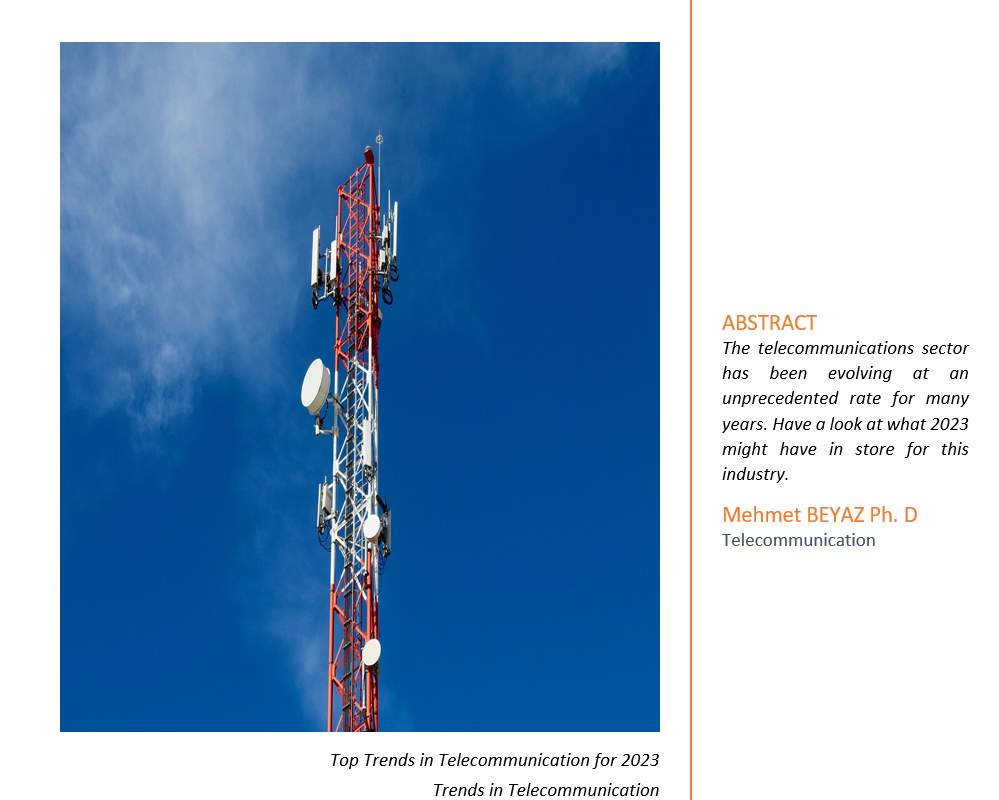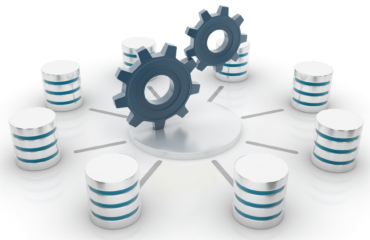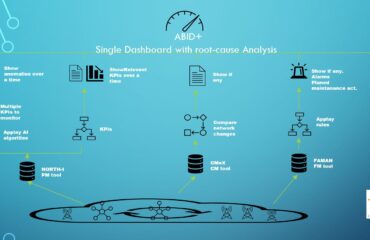
Top Trends in Telecommunication for 2023
The year 2022 was a breakthrough for the telecom sector. This industry experienced enormous growth thanks to the introduction of 5G and the growing popularity of artificial intelligence. With 2023 rapidly approaching, the development of new technologies and marketing strategies is accelerating.
The Internet of Things (IoT), 5G, and other broad themes have picked up steam and will continue to change telecommunications in the next few years. The New Year’s possibilities look bright, and customers may expect to be astounded by the telecom business developments for 2023. Several global markets are expected to experience turbulence during the coming year. Therefore, corporations are stepping up development and digital transformation.
A variety of unique technologies and developments in the telecommunications industry will be used more frequently to improve value propositions and consumer experience. For example, big tech companies are investing billions of dollars in VR systems, which will likely become commonplace sooner than anticipated.
Private telecom companies are likewise enjoying a moment of recognition as their stocks surpass those of their publicly traded competitors. Let’s look at the main trends the telecommunications industry will experience in 2023.
5G
Although 5G has been around for a while, most services provided by consumer service providers still rely on 4G infrastructure rather than a pure form of 5G technology. Unfortunately, this indicates that consumers are unlikely to utilize it to its full potential. The development of 5G technology has faced many hurdles, and while it was anticipated that the technology would become mainstream by 2022, it has not happened. However, experts have claimed that 2023 will be the year of 5G, and most problems associated with the deployment of 5G will be resolved.
The transition to what is being referred to as stand-alone or Private 5G will be the next stage in the deployment of 5G. According to analysts, many of the intriguing improvements and capabilities that 5G offers, including network slicing, are expected to take off in 2023.
In recent times, private 5G has been regarded as the leading telecom trend, and it’s expected to become commonplace in 2023. Many telecoms firms have already invested in the required infrastructure, with 5G SA networks operational in Japan, South Korea, and many other nations.
Many gadgets on the market today support 5G. Additionally, as industry 4.0 advances, Private 5G will assist businesses in connecting thousands of IoT devices, increasing operational effectiveness and productivity and paving the way for creating mission-critical apps across practically all sectors.
Users will benefit from faster, more reliable, and more consistent 5G environments. Digital twins, 3D robot control, healthcare remote control, and other high-value usage cases will all be possible for enterprises thanks to Private 5 G’s low latency.
These next-generation use cases were virtually impossible to implement using traditional network technologies. Thus, they are all set to open up a lucrative new telecom market in 2023.
Cloud Computing
Cloud computing has gained popularity over the last three years as more businesses have shifted to digital delivery of services in response to the worldwide pandemic. The worldwide hyper-scale cloud market would generate US$693.49 billion by 2026. Telcos should investigate this game-changing technological advancement.
The increasing adoption of hyperscalers by SMEs in emerging markets is a major factor impacting the hyper-scale cloud market. Due to their physical infrastructure and the rapid advancement of technology, SMEs are constantly searching for ways to save their IT expenses and get past problems with data security, expensive CAPEX, and digitization.
The hyper-scale cloud industry has expanded due to an increase in SMEs’ need for cloud computing throughout industries. Data justify have opened up around the globe to be near end users, such as in Chile, South Africa, Indonesia, and Mexico.
In 2023, Telcos will use the cloud to enable scalability by developing services that can be downsized when business is expected to slow down due to external factors like living costs or supply chain interruption. Additionally, it implies that new services can be promptly introduced to the market and tested to measure consumer interest without suffering significant losses.
Cloud computing offers software at significantly cheaper costs through the use of software virtualization on distant servers. This makes it simple to allocate computer resources as needed and reduces the hardware price.
Cloud computing will become increasingly important as the race to commercialize 5G services picks up speed. Cloud service providers (CSPs) will set themselves apart by how fast and effectively they can put relevant tools in the hands of their customers.
Additionally, in 2023, we anticipate seeing more businesses use the cloud’s effectiveness to achieve their sustainability objectives. Cloud service providers can achieve scale economies that smaller businesses cannot since they pool resources across all their consumers.
Operating an application or task in the cloud as opposed to on-premises is more effective and results in a reduction in carbon emissions.
The creation and uptake of sovereign cloud solutions in 2023 will be driven by the need to satisfy an expanding set of data privacy regulations. The idea of a sovereign cloud is not new, but it is growing in popularity as the geopolitical landscape evolves. A trusted cloud that maintains the local governing bodies’ data security regulations is known as a sovereign cloud.
Major corporations, including Vodaphone, AT&T, and Telefonica, announced new agreements with cloud service providers to manage their data processing activities this year. We anticipate this to grow in the upcoming year as telecoms develop services to support 5G and edge computing applications through cloud platforms.

Edge Orchestration
The idea of edge orchestration is relatively new. This addition to the listing of telecom market trends is intriguing. This technique uses an edge orchestrator, a resource management tool, to control, automate, and synchronize the transfer of resources between various types of devices, architecture, and network domains at the edges of a network.
Edge computing stores and allows applications to run. This is made possible by end-user devices like sensors, motors, and controllers that gather, process, store, and analyze data close to the sites where information is consumed and created.
The edge cloud’s locality, combined with edge computing, gives user applications advantages like low latency, accessibility, and reliability. It also offers the required speed for fast broadband and latency-sensitive business cases such as AR, VR, IoT, and industry 4.0.
Thanks to the deployment of 5G networks with dozens of centers and dispersed cloud edge sites by CSPs in 2023, the adoption of edge cloud-based computing will pick up speed. In addition, the use of multi-cloud, network-as-code, open APIs, and purpose-driven closed-loop orchestration will enable the expansion of edge cloud computing environments.
At the network edge, these facades contain a converged structure that can meet various user needs while preserving high flexibility and low operating costs.
As a result, edge orchestration is crucial, and edge ecosystems will become a crucial pillar of the CSPs’ digital transformations, allowing them to become more relevant in the market in the coming year.
Containerization
Containerization is a significant telecom development for 2023. The technology enables the isolation of an application’s resources and code, resulting in greater time-to-market, quicker deployment, and overall efficiency on any infrastructure.
Containerization is becoming increasingly popular due to its portability, safety, versatility, modularity, scalability, and small environmental footprint. These essential characteristics make it possible for businesses to handle deployment-related duties swiftly and effectively.
Containerized systems simplify developers’ lives and help them overcome technological and operational obstacles brought about by the growing complexity of networks and the issues that come with it in terms of software development.
Due to its smaller, virtualized, service-oriented design and the lack of hardware or other platform dependencies, containerization boosts the application’s responsiveness and accessibility. When appropriately used, containerization increases DevOps effectiveness, streamlines business operations, and reduces conflicts with existing infrastructure.
Next-generation apps or networks can be implemented with the help of containerization technology. For instance, it is crucial to create network slices, enabling CSPs to build digital replicas of networks with different business needs. To be more precise, developers can create those slices with the help of the containerized system when they need a network that can support smart meters and autonomous cars with varying bandwidths and delays.
Additionally, containerization has important financial and security advantages. In comparison to conventionally created networks, container-based networks are developed at much lower costs and risks. Furthermore, due to its cloud-native technology, containerized apps may run without difficulty in any environment, drastically lowering development and maintenance expenses.
Cyber security and Dependence on Blockchain Technology
Given how quickly digital technologies are assuming a central role in everyday life, information and digital infrastructures need to be secured regardless of where they are located. For the telecom sector, cyber security and stability are top priorities.
Increased cyberattacks and data leaks will occur in 2023. Given the enormous amounts of sensitive data held on numerous intricate networks, the telecom industry has historically remained the most viable target for cyberattacks.
As a result of the additional security risks brought by 5G technology, telcos must be ready for all kinds of cyberattacks. This entails creating a suitable IT infrastructure and combining it with expertise and procedures to promote resilience.
Threat detection, incident management, and preventive techniques must all be used for optimal cyber security. IoT-enabled networks are more susceptible to significant cyberattacks and crimes.
Hackers may use unprotected gadgets, such as routers, laptops, cars, webcams, home surveillance systems, or IoT units, as weapons. Telecom businesses will thus need to make investments in enhanced cyber security measures. The usage of blockchain technology is one technique to increase cyber security.
A distributed database called blockchain can be employed to store data safely. More telecom businesses will start utilizing blockchain technology in 2023 to increase their cyber security. Blockchain dramatically changes the security of conducting business with third parties. It can access several users in the ultra-dense network ecosystem for 5G, providing a secure and simple authentication mechanism to solve security threats. Additionally, it will lower expenses while steadily raising revenue as well. Blockchain enables CSPs to deliver innovative and secure services. Hence it is expected to be at the forefront of the telcos sector in 2023.
Artificial Intelligence
Almost every industry has the potential to be transformed by artificial intelligence, and the telecom sector is no exception. It is employed for a variety of tasks, such as simplifying customer service and controlling network communications congestion.
Telecom operators can respond to inquiries for assistance with tech support, diagnostics, and infrastructure management more quickly and effectively, thanks to chatbots and virtual assistants. Using AI, the telecommunications sector is experimenting and bringing fresh, creative ideas to enterprises. From gathering critical information, including customer profiles, mobile device usage, and billing, AI abilities are used everywhere.
Many firms are implementing AI operating infrastructure for telecom to collect and combine enormous volumes of data for better use. Through AI solutions, millions of individuals now have access to connect gadgets and enjoy a speedier network connection.
The Telecom sector is also urged to embrace digital transformation in order to take advantage of the potential of AI in automation and digitalization. Improved AI algorithms can help the telecom sector, from handling data to producing the right outputs as needed for business requirements.
AI and machine learning are also employed to identify fraudulent activities, like illegal or unauthorized access to networks or certain network segments or the stealing of services using passwords and user accounts that have been compromised.
Additionally, it has been crucial in network optimization, which helps providers by controlling network traffic. Hence, network providers may now use AI to identify and fix problems even before they arise. AI monitoring systems nowadays can detect and track the activities carried out by telecom companies. The network architecture is well-planned, and machine learning is used to manage the gathered data.
We can anticipate even more intriguing and distinctive use cases for AI to emerge in the telecommunication sector in 2023 as the technology advances and the difficulties that telecom operators face get more intricate.
Digital Twins
Digital twins refer to a virtual representation of a network in the telecom industry that is based on live data from numerous sources (I, however, do not agree that live data is Digital Twin), including ML data lakes, IoT-connected devices, edge clouds, monitors, subscriber data, and more.
The goal is to simulate and use machine learning to visualize and predict various scenarios’ outcomes without real-world repercussions. Various types of data that come from numerous sources fuel a digital twin’s flow. Therefore, contextualization – placing all this data into certain situations so that it might produce meaning – is necessary.
The high degree of mobility for applications in various industries and for different goals that the digital twin offers is one of the reasons why it has grown to be such a significant business trend. Even though this technology now has several application domains, more are constantly being developed.
If we give it some thought, this technology is brilliant in the long term. A digital twin could evaluate if the risk of a painful surgery is worth taking better than a surgeon can be based on data gathered from the patient’s testing. These technological advancements in the telecom industry have the potential to revolutionize a number of industries.
Smart cities consolidate all administration of infrastructure and services on their platform, making them one of the most astonishing applications of digital twins. Processes become quicker and more accurate because of digital twins.
Additionally, resource management can be improved, and extensive implementation of sustainability programs is possible (see https://inform.tmforum.org/research-and-analysis/case-studies/synergy-turkcells-automated-smart-energy-management-solution/). A digital twin is a fantastic tool for analyzing dangers to individuals and assets in industries with risky activities. This technique can prevent many accidents.
The appearance of digital twins and their avatars in 3D metaverse implementation is also possible. This is undoubtedly one of the most important trends to implement in the telcos sector in 2023 because they have many advantages and fascinating use cases.
Final Thoughts
These are just a few of the top trends in telecom for 2023. The operations of telecom businesses will be strongly impacted by these trends, particularly the rollout of 5G. Furthermore, they will be influenced for many years by their capacity to profit from 5G and other developments. These trends will result in a digital transformation, a technical revolution, greater data security, higher quality services, and new revenue prospects for telecoms.
Adopting these trends won’t be simple, though, since it calls for leadership commitment and personnel up-skilling, and education. However, telecommunication companies that make the change will be better prepared to embrace new growth and more easily adopt contemporary technologies.



